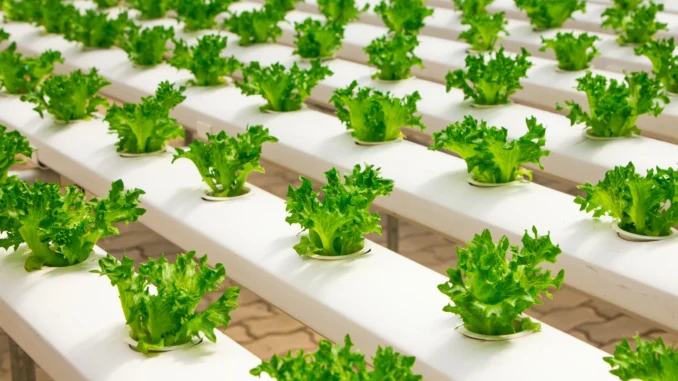
As the world’s population continues to grow and climate change poses significant challenges to our food systems, the future of food is a topic of paramount importance. In recent years, several new trends have emerged, signaling a shift towards more sustainable and innovative farming practices. These trends promise to not only ensure food security for future generations but also reduce the environmental impact of agriculture.
Table of Contents
Vertical Farming
Vertical farming is a revolutionary approach to agriculture that involves growing crops in vertically stacked layers, often in controlled indoor environments. By utilizing hydroponics or aeroponics, where plants grow without soil and receive nutrients through water or mist, vertical farms can produce more food with less land, water, and energy. This technology allows for year-round cultivation and can be located in urban centers, reducing the need for extensive transportation of produce and lowering greenhouse gas emissions.
Plant-Based Diets
The rise of plant-based diets is reshaping the food industry. With concerns about the environmental impact of animal agriculture, health considerations, and animal welfare, many consumers are opting for plant-based alternatives to meat and dairy products. As a result, companies are investing in research and development to create more realistic and sustainable plant-based meat substitutes, which could significantly reduce the demand for traditional livestock farming in the future.
Precision Agriculture
Precision agriculture integrates advanced technologies, such as sensors, drones, and GPS-guided machinery, to optimize farming practices. By collecting real-time data on soil health, weather conditions, and crop growth, farmers can make informed decisions, reducing the use of fertilizers and pesticides while increasing crop yields. Precision agriculture also minimizes waste and enhances resource efficiency, making it a key component of sustainable farming.
Cellular Agriculture
Cellular agriculture is an emerging field that involves growing animal products, like meat, milk, and eggs, in a laboratory using animal cells instead of raising and slaughtering whole animals. This technology has the potential to address the ethical and environmental concerns associated with traditional animal farming. It requires fewer resources and produces fewer greenhouse gas emissions, making it a promising avenue for sustainable food production.
Food Waste Reduction
Food waste is a significant global problem, with a substantial amount of food being discarded at various stages of the supply chain, from production to consumption. In the future, reducing food waste will be a priority, and innovative solutions, such as improved storage techniques, smarter packaging, and better distribution systems, will play a crucial role in minimizing waste and maximizing the efficient use of resources.
Agroforestry
Agroforestry combines agriculture and forestry practices to create integrated and sustainable land-use systems. By planting trees and shrubs alongside crops and livestock, agroforestry enhances biodiversity, improves soil health, and sequesters carbon dioxide from the atmosphere. This approach not only supports food production but also helps mitigate climate change and provides additional economic benefits to farmers.
Local and Community-Based Food Systems
Supporting local and community-based food systems can promote food sovereignty, reduce the carbon footprint of food transportation, and strengthen ties between consumers and producers. Community gardens, farmers’ markets, and farm-to-table initiatives are examples of efforts to create more resilient and sustainable food networks.
New opportunities
This transition will offer new possibilities to everyone involved in the food value chain while also placing our food system on a sustainable course. For decades to come, shrewd businesses will leverage the food crisis to their advantage.
Government healthcare spending may change from being centered on treating disease to boosting overall care and welfare. And innovation will provide customers with more choices for sustainable and healthful products at reasonable rates as a result of rising public knowledge and demand. Both the planet and all of its stakeholders will profit from this synergy.
Eating more fruits and vegetables or eating less processed food, sugar, and red meat are just two examples of the generalizations and hazy concepts that our present “healthy nutrition paradigm” is built around. So, one of the main difficulties is coming up with a relevant and practical definition of nutritious food for the common customer.
The introduction of conservation tillage, contemporary genetics (not necessarily GMOs), and automated or drip irrigation might further boost the quantity of “crop per drop,” as few natural resources are as crucial and as instantly endangered as water. Water management and soil health are interdependent. With enhanced control of erosion and fertilizer or biocide applications, policies that promote the idea of multifunctional agriculture can improve soil and water quality at the landscape level and treat pollution. To achieve the necessary production gains, water plays a crucial role in agriculture. There is no doubt that many freshwater sources are depleting, agriculture is vying for water resources more and more, and the quality of the water is also declining in many areas of the world.
In conclusion, the future of food is evolving towards more sustainable and innovative farming practices. The adoption of vertical farming, plant-based diets, precision agriculture, cellular agriculture, food waste reduction, agroforestry, and local food systems all contribute to a more sustainable and resilient food system. As these trends continue to develop and gain traction, they have the potential to address the challenges posed by population growth and climate change, ensuring a more sustainable and food-secure world for generations to come. However, it will require collective efforts from governments, businesses, and individuals to embrace and invest in these transformative approaches to food production and consumption.

Leave a Reply